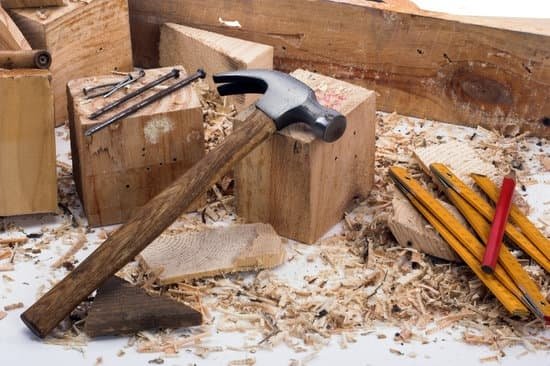Are you interested in learning how to plan woodworking projects? Woodworking projects involve creating items from wood, such as furniture, decorations, and structures. Proper planning is essential to ensure that your project runs smoothly and successfully. This introductory section will provide an overview of the key components involved in planning woodworking projects.
Woodworking projects are not only a creative outlet but also a practical skill that allows individuals to design and build functional pieces. However, without proper planning, woodworking projects can quickly become overwhelming and costly. Therefore, understanding the significance of planning is crucial for anyone looking to embark on a woodworking project.
In this article, we will cover various aspects of planning woodworking projects, including understanding tools and materials, setting project goals, designing the project, selecting the right wood, creating a workable project plan, safety precautions, troubleshooting, and problem-solving. By the end of this article, readers will have a comprehensive understanding of how to effectively plan their woodworking projects and feel confident in taking on new endeavors.
Whether you are a beginner or an experienced woodworker, having a solid plan in place is key to achieving successful outcomes.
Understanding Woodworking Tools and Materials
When it comes to woodworking projects, having a good understanding of the tools and materials you’ll need is essential for success. The right tools can make your project easier and safer, while the appropriate materials can ensure the longevity and quality of your finished piece. Before diving into any woodworking project, it’s crucial to know which tools are necessary and how to select the best materials for your specific project.
Firstly, let’s talk about tools. There are countless woodworking tools available, each serving a different purpose. From hand tools like chisels and hand saws to power tools such as drills and sanders, it’s important to identify which ones you’ll need for your project.
Consider the size and scope of your project, as well as your skill level with various tools. Additionally, quality is key when it comes to woodworking tools – investing in high-quality tools will not only make your work easier but also produce better results.
Next, selecting the right materials is equally critical. Wood comes in various types, each with its own characteristics in terms of durability, appearance, and cost. Some common types of wood used in woodworking projects include oak, pine, maple, and cherry.
Your choice of wood will depend on factors such as the intended use of the final product and personal preferences. It’s important to consider factors such as grain pattern, color consistency, hardness, and stability when choosing wood for your project.
Setting Your Woodworking Project Goals
Setting clear and achievable goals is a crucial aspect of planning woodworking projects. By establishing specific objectives for your project, you can effectively streamline the entire process and ensure successful outcomes. In this section, we will discuss the importance of setting realistic timelines and budgets for your woodworking projects.
Establishing Clear and Achievable Goals
Before diving into a woodworking project, it’s essential to determine what you aim to achieve with the final product. Whether it’s building a piece of furniture, crafting decorative items, or constructing structural elements, defining clear goals will guide your planning and execution. Consider factors such as the purpose of the project, desired dimensions, design aesthetics, and functionality.
Importance of Setting Realistic Timelines and Budget
Once you have outlined your project goals, it’s crucial to establish realistic timelines for completion. Take into account factors such as available time for working on the project, potential setbacks, and any external commitments that may affect your progress. Additionally, setting a feasible budget is equally important to avoid overspending on materials and tools. Assess the cost of necessary supplies and equipment while also considering any additional expenses that may arise during the course of the project.
As you embark on planning your woodworking projects, understanding the significance of setting clear goals, realistic timelines, and budget constraints will lay a solid foundation for a successful endeavor. By having a well-defined plan in place from the outset, you can effectively manage resources and allocate time efficiently throughout each phase of the project.
Designing Your Woodworking Project
Designing a woodworking project is a crucial step in the planning process. Without a clear and detailed design, it can be challenging to execute the project effectively. Here are some key methods and tips for creating a comprehensive project design:
Methods for Creating a Detailed Project Design:
1. Sketching: Start by sketching out your ideas for the project. This allows you to visualize the final product and make any necessary adjustments before moving forward with the actual construction.
2. 3D Modeling: Utilize 3D modeling software to create a digital representation of your project. This can help you see how different elements will come together and make any modifications as needed.
3. Blueprint Creation: For more complex projects, creating a detailed blueprint with measurements and specifications is essential. This serves as a guide for the construction phase and ensures accuracy in the final product.
Tips for Incorporating Your Personal Style and Preferences into the Design:
– Consider your personal taste and style when designing the project. Whether it’s incorporating intricate details or unique features, adding a personal touch to the design makes the end result more meaningful.
– Take inspiration from various sources such as woodworking magazines, online tutorials, or even nature itself to infuse creativity into your design.
By following these methods and tips, you can ensure that your woodworking project design meets your expectations and sets the stage for successful execution.
Now that you have learned about designing your woodworking project, it’s time to move on to selecting the right wood for your project.
Selecting the Right Wood for Your Project
When planning a woodworking project, one of the most critical decisions you’ll make is selecting the right type of wood. The type of wood you choose can greatly impact the durability, appearance, and overall cost of your project. Here are some tips on how to choose the best wood for your project based on these factors.
First, consider the durability and strength requirements of your project. For outdoor furniture or items that will be subjected to heavy wear and tear, hardwoods like oak, maple, or cherry are ideal choices due to their natural strength and resistance to damage. On the other hand, if you’re working on a decorative piece or an interior project where weight isn’t an issue, softer woods such as pine or cedar can be suitable options.
In addition to durability, the appearance of the wood is another crucial factor to consider. The color, grain pattern, and texture of different types of wood can vary significantly. For example, walnut and mahogany have rich dark tones with attractive grain patterns that are perfect for creating elegant pieces of furniture.
Alternatively, lighter woods like birch or ash offer a more contemporary look with a clean and minimalistic appeal. Ultimately, your choice should align with your aesthetic preferences and the intended style of your project.
Lastly, cost is an important consideration when selecting wood for your project. Exotic woods such as teak or rosewood can be quite expensive due to their rarity and unique characteristics. If you’re working within a budget, more common varieties like pine or fir may be more cost-effective options without compromising too much on quality.
By carefully considering these factors when selecting wood for your woodworking projects, you can ensure that your finished piece meets both functional and aesthetic expectations while staying within your budget constraints.
| Wood Type | Characteristics |
|---|---|
| Oak | Natural strength and durability |
| Walnut | Rich dark tones with attractive grain patterns |
| Pine | Lighter wood with cost-effective price point |
Creating a Workable Project Plan
When it comes to woodworking projects, having a solid project plan is crucial for success. Without a clear and detailed plan in place, you may find yourself facing unnecessary challenges and setbacks during the construction process. Here are some key steps to consider when creating a workable project plan:
- Define the Project Scope: Before diving into any woodworking project, it’s important to clearly define the scope of the project. Consider the size, complexity, and end goal of your project. This will help you determine the materials needed, tools required, and estimated timeline for completion.
- Break Down Tasks: Once you have defined the scope of your woodworking project, break down the entire process into manageable tasks. This could include cutting wood pieces, assembling components, sanding, finishing, and more. By breaking down the tasks, you can prioritize and organize your workflow more effectively.
- Create a Timeline: Setting a realistic timeline for your woodworking project is essential for keeping yourself on track. Consider factors like your availability to work on the project, drying times for finishes or adhesives, and any other potential delays that may arise.
By following these steps and creating a comprehensive project plan, you can ensure that your woodworking project progresses smoothly and efficiently. Planning ahead can also help you anticipate any challenges or obstacles that may come up during the construction process.
Overall, having a well-thought-out project plan not only helps in executing woodworking projects successfully but also allows flexibility for adjustments if needed. So next time you embark on a new woodworking endeavor, take the time to develop a detailed plan – it will save you time and hassle in the long run.
Whether you’re a seasoned woodworker or just starting out, understanding how to plan woodworking projects is essential for achieving favorable results. Creating a workable project plan sets the foundation for successful craftsmanship while also providing guidance throughout each stage of construction.
Safety Precautions for Woodworking Projects
Essential Safety Measures
When engaging in woodworking projects, it is crucial to prioritize safety at all times. Whether you are a seasoned woodworker or a novice, understanding and implementing essential safety measures will minimize the risk of accidents in the workshop.
Some of the fundamental safety precautions include wearing protective gear such as goggles, ear protection, and dust masks to safeguard your eyes, ears, and respiratory system from potential hazards. Additionally, using appropriate ventilation systems to control sawdust and fumes is necessary for maintaining a safe work environment.
Utilizing Safety Equipment
In addition to personal protective gear, utilizing the right safety equipment can significantly reduce the likelihood of injuries during woodworking projects. This includes installing push sticks and feather boards when operating power tools to keep your hands at a safe distance from cutting edges. Furthermore, integrating adequate dust collection systems and fire extinguishers in the workshop ensures that potential health hazards and fire risks are mitigated effectively.
Tips for Minimizing Risk
Woodworking inherently involves handling sharp tools and heavy machinery, which poses potential risks if not approached with caution. To minimize these risks, it is essential to maintain a clutter-free workspace by organizing tools and materials properly.
Moreover, regular maintenance of tools and machinery is vital for ensuring their optimal functionality and reducing the likelihood of malfunctions that could lead to accidents. Overall, being mindful of safety protocols and paying attention to detail can significantly contribute to a secure woodworking environment.
Following these key safety precautions while planning your woodworking project will provide you with peace of mind as you embark on your creative endeavor. Remembering these measures will not only ensure your well-being but also help you focus on bringing your project to life without unnecessary distractions or concerns about potential risks.
Troubleshooting and Problem-Solving
One of the most important aspects of woodworking projects is being able to troubleshoot and solve any issues that may arise during the process. No matter how well you plan, unexpected challenges can always occur, so it’s crucial to be prepared for them. In this section, we will discuss common challenges in woodworking projects and provide tips on how to overcome them.
One of the most common problems in woodworking projects is inaccurate measurements or cuts. This can result in pieces that don’t fit together properly, which can be frustrating and time-consuming to fix. To avoid this issue, be sure to double-check all your measurements before making any cuts. Additionally, investing in high-quality measuring tools and using clamps to secure your wood can help ensure more accurate cuts.
Another challenge that woodworkers often encounter is wood splitting or cracking during the assembly process. To prevent this from happening, it’s important to choose the right type of wood for your project and to properly prepare it before use. This may involve sanding down rough edges or pre-drilling holes to prevent splitting when inserting screws or nails.
Lastly, unexpected changes in your project plans or design can also pose a problem. Whether it’s due to a shortage of materials or an unforeseen limitation with your tools, being able to adapt and problem-solve is essential. One way to address this challenge is by having a contingency plan in place and being open to making adjustments as needed.
By understanding these common challenges in woodworking projects and knowing how to troubleshoot them effectively, you can approach your projects with more confidence and skill. Remember that every setback is an opportunity for growth and learning in your woodworking journey.
Conclusion and Next Steps
In conclusion, planning woodworking projects is a crucial step in ensuring the success and quality of your creations. From understanding the tools and materials needed to setting clear goals and creating a project plan, the process requires attention to detail and careful consideration. By following the tips provided in this article, you can embark on your woodworking journey with confidence and achieve results that exceed your expectations.
It’s important to remember that selecting the right wood for your project and incorporating a personalized design are essential aspects of planning that can greatly impact the outcome. Additionally, prioritizing safety measures in the workshop and being prepared to troubleshoot any challenges that may arise are vital for a smooth woodworking experience. By taking these factors into account, you can minimize risks and ensure a seamless progression through your project.
As you begin planning your woodworking projects, it’s important to approach each step with patience and flexibility. Remember that every project may come with its own set of unexpected changes or obstacles. However, by keeping an open mind and being adaptable, you’ll be better equipped to handle any challenges that come your way. With proper planning and preparation, you’ll be on your way to creating stunning woodworking pieces that reflect your creativity and craftsmanship.

Hi everyone! I’m a woodworker and blogger, and this is my woodworking blog. In my blog, I share tips and tricks for woodworkers of all skill levels, as well as project ideas that you can try yourself.





